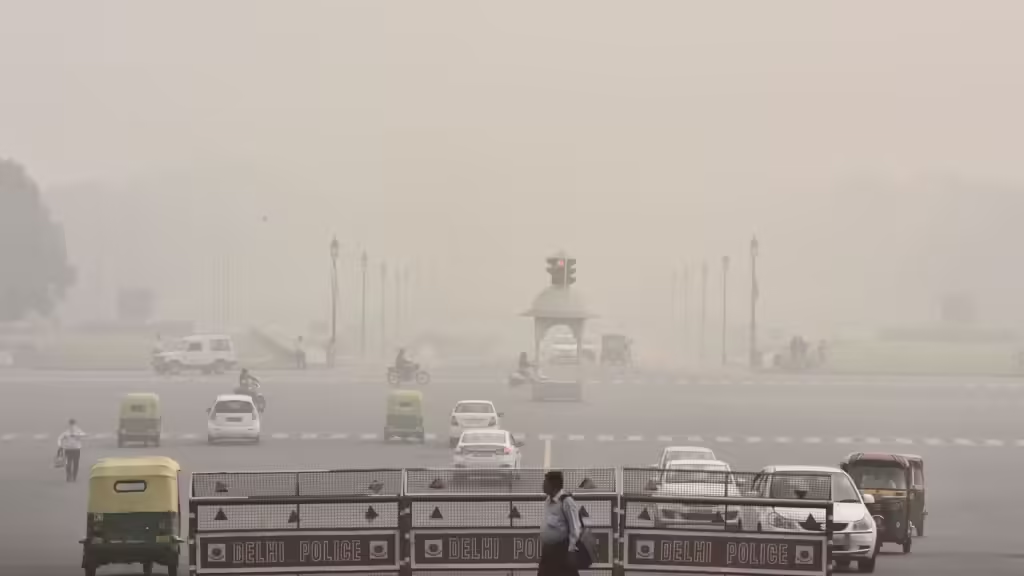Delhi NCR Air Quality Update: Pollution Remains Stubbornly High with AQI Above 400; Here’s the Status in Key Areas

Air and water pollution in Delhi remain at alarming levels, posing serious challenges as the Chhath Puja festival approaches. The capital faces deteriorating air quality, making it difficult for residents to breathe, while contaminated water supply and high pollution in the Yamuna River add to the concern. On Tuesday morning, the Air Quality Index (AQI) surged past 400, with the second phase of the Graded Response Action Plan (GRAP) active since October 22.
AQI Levels Still Above 400
According to Central Pollution Control Board (CPCB) data, multiple monitoring stations reported AQI levels exceeding 400 as of 8 a.m., including Anand Vihar (457), Alipur (389), Wazirpur (437), Jahangirpuri (440), Rohini (397), and Punjabi Bagh (403).
On Monday, pollution worsened visibility, with dense smog persisting until noon in many areas, including Vivek Vihar, Anand Vihar, and India Gate. People reported eye irritation and difficulty breathing as the smog intensified.
Medical experts have urged caution, especially for vulnerable groups such as pregnant women, young children, the elderly, and those with respiratory issues. They advise avoiding outdoor activities, particularly in the morning and evening. Even healthy individuals are encouraged to avoid strenuous activities to prevent elevated blood pressure.
Environment Minister Gopal Rai noted that adverse weather is exacerbating Delhi’s air pollution. Smog blanketed the city on Monday morning, with air quality hitting “very poor” levels. Rai assured that the government is closely monitoring the situation and that agencies are actively working to curb pollution levels. He announced a review of efforts under the winter action plan, with plans to enhance strategies as needed. The government has resolved 88% of complaints lodged on the Green Delhi app, addressing over 71,558 out of 81,418 reported issues.
Rai highlighted various anti-pollution initiatives, including an anti-dust campaign, bio-decomposer spraying, tree-planting drives, and firecracker awareness campaigns. Water spraying on roads is being carried out using 200 mobile anti-smog guns, with two units deployed in each assembly constituency.
The Environment Minister expressed hope that the Central government would soon convene a meeting to discuss the possibility of artificial rain to help combat pollution. Rai had previously written to the Center on October 23 regarding this matter and indicated he would follow up if necessary.









